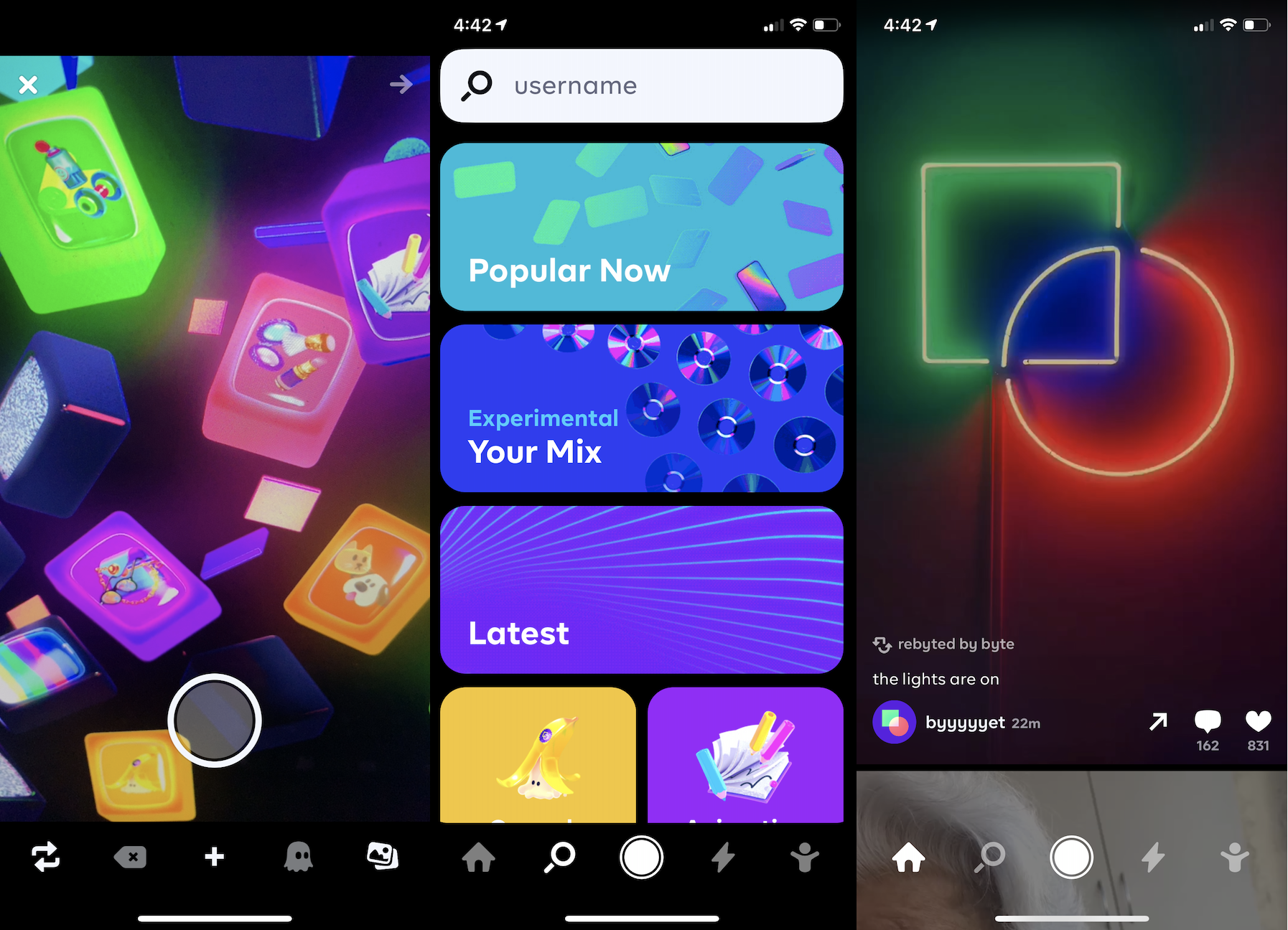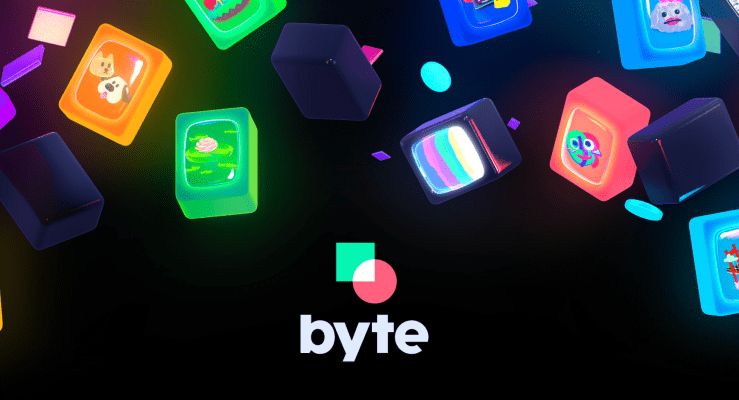Two years after Vine’s co-founder Dom Hofmann announced he was building a successor to the short-form video app, today Byte makes its debut on iOS and Android. Byte lets you shoot or upload and then share six-second videos. The tiny time limit necessitates no-filler content that’s denser than the maximum 1-minute clips on TikTok.
Byte comes equipped with standard social features like a feed, Explore page, notifications, and profiles. For now, though Byte lacks the remixability, augmented reality filters, transition effects, and other bonus features you’ll find in apps like TikTok .

What Hofmann hopes will differentiate Byte is an early focus on helping content creators make money — something TikTok, and other micro-entertainment apps largely don’t offer. The app plans to soon launch a pilot of its partner program for offering monetization options to people proving popular on Byte. When asked if Byte would offer ad revenue sharing, tipping, or other options to partners, Hofmann told me that “We’re looking at all of those, but we’ll be starting with a revenue share + supplementing with our own funds. We’ll have more details about exactly how the pilot program will work soon.”
Many creators who’ve grown popular on apps like TikTok and Snapchat that lack direct monetization have tried to pull their audiences over to YouTube where they can earn a steady ad-share. By getting started paying early, Byte might lure some of those dancers, comedians, and pranksters over to its app and be able to retain them long-term. Former Vine stars turned TikTok stars like Chris Melberger. Joshdarnit, and Lance Stewart are already on Byte.
Staying connected with Byte’s most loyal users is another way Hofmann hopes to set his app apart. He’s been actively running a beta tester forum since the initial Byte announcement in early 2018, and sees it as a way to find out what features to build next. “It’s always a bummer when the people behind online services and the people that actually use them are disconnected from one another, so we’re trying out these forums to see if we can do a better job at that” Hofmann writes.

Byte founder Dom Hofmann
Byte is a long time coming. To rewind all the way, Hofmann co-founded Vine in June 2012 with Colin Kroll and Rus Yusupov, but it was acquired by Twitter before its launch in January 2013. By that fall, Hofmann had left the company. But 2014 and 2015 saw Vine’s popularity grow thanks to rapid-fire comedy skits and the creativity unlocked by its looping effect. Vine reached over 200 million active users. Then the unthinkable happened. Desperate to cut costs, Twitter shut down Vine’s sharing feed in late 2016 so it wouldn’t have to host any more video content. The creative web mourned.
By then, Hofmann had already built the first version of Byte, which offered more free-form creation. You could pull together photos, GIFs, drawings and more into little shareable creations. But this prototype never gained steam. Hofmann gave Vine fans hope when he announced plans to build a successor called V2 in early 2018, but cancelled it a few months later. Hofmann got more serious about the project by then end of 2018, announcing the name Byte and then beginning beta testing in April 2019.
Now the big question will be whether Byte can take off despite its late start. Between TikTok, Snapchat, Instagram, and more, do people need another short-form video app? Winning here will require seducing high quality creators who can get bigger view counts elsewhere. Considering there’s already a pile of TikTok competitors like Dubsmash, Triller, Firework, and Facebook’s Lasso available in the US, creators seeking stardom on a less competitive network already have plenty of apps to try. Hofmann may have to rely on the soft spot for Vine in people’s memories to get enough activity on Byte to recreate its predecessor’s magic.
